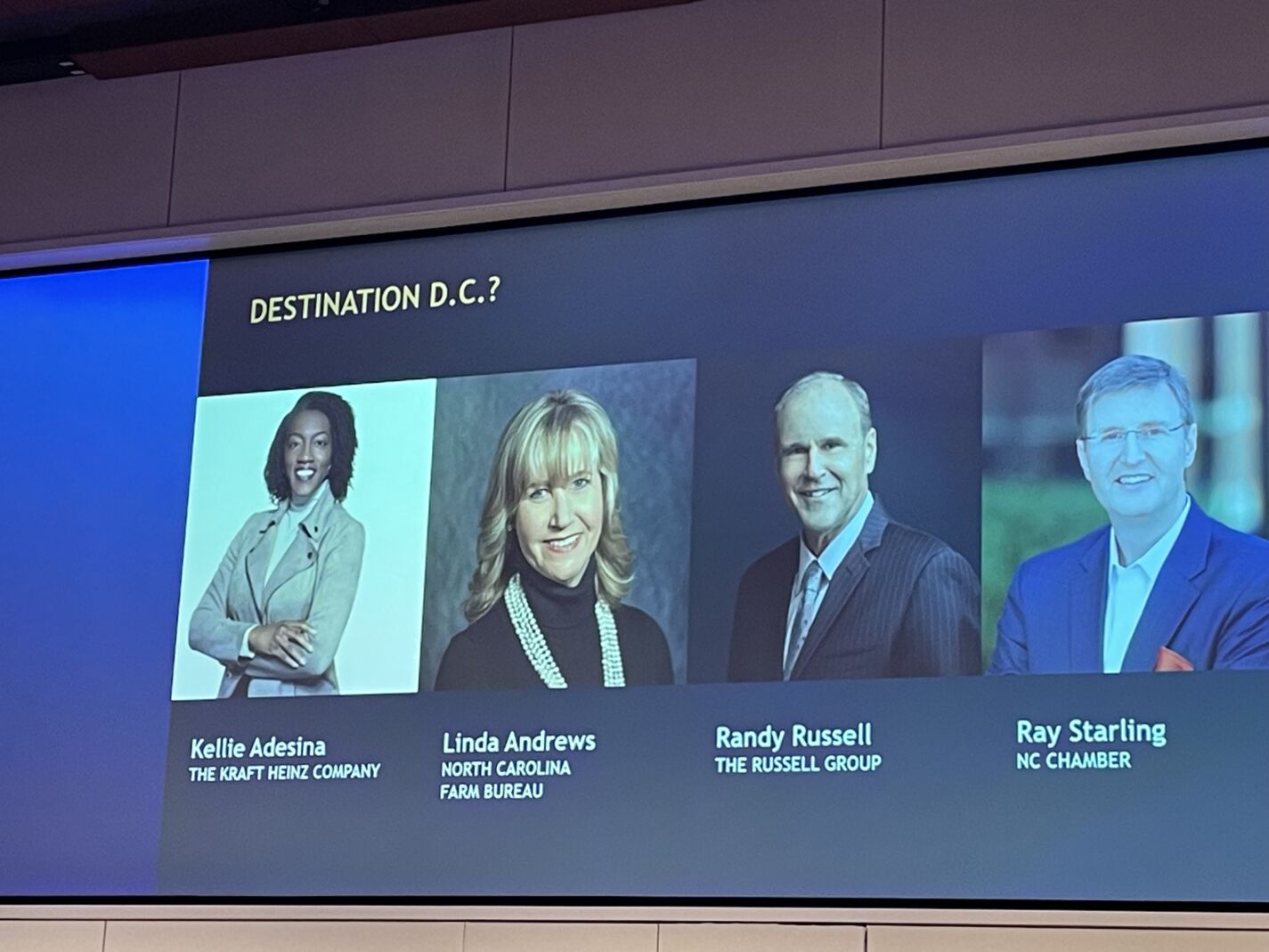In 2024, the world faces an emerging food supply challenge as the agricultural industry experiences labor shortages and the growth of the world’s population is projected to grow significantly between now and 2050. Agriculture experts discussed how to address these issues last week during “Imagine Ag Day,” hosted by the NC Chamber in Cary.
One of the day’s highlights was a panel discussion mediated by Ray Starling, general counsel of the NC Chamber and president of the NC Chamber Legal Institute. The experts participating were Randy Russell, an agriculture lobbyist and president of The Russell Group; Kellie Adesina, the director of federal government affairs at Kraft Heinz; and, Linda Andrews, the national legislative director of the North Carolina Farm Bureau.

Starling brought this panel of experts together to discuss what can be done as a state to best position the agricultural sector to get things done in DC, and what may be possible in 2024.
“Spoiler alert: nothing,” Starling joked.
Starling kicked off the panel by turning to Andrews on the issue of Agricultural labor dynamics.
“You’re the face of that for us and North Carolina,” Starling told Andrews. “Nobody is working more diligently on that than you, you know the programs, you know the right people.”
Starling asked Andrews what the one thing was that she wished everyone knew about the labor debate.
“One thing I would like for everybody to learn from here going forward is what we’ve been doing for the last two decades is not working,” said Andrews. “And I don’t see that getting us where we need to be for us to be able to have access to a valid and reasonable workforce that allows our state and our industry to move forward.”
Starling asked Andrews what the most significant roadblock the agricultural sector faces when it comes to labor.
“We’re gonna have to figure out how to build a consensus,” said Andrews. She explained that as long as geographical regions prioritize their own interests, building a consensus will be difficult. Andrews revealed that the labor shortage is not new, but has been around for about 15-20 years. She explained that building a consensus will have to be a bipartisan effort.
“What we have to have is the courage to take on the Ag labor issue,” said Russell.
Kellie Adesina spoke to the point that we can all agree on safe, affordable, and nutritious food regardless of partisan affiliations.
“I’m always operating from this position of let’s focus on what we have in common and then work through, you know, the differences,” said Adesina.
Adesina sees a lot of reluctance to engage. According to her, there is an assumption that those from more suburban areas do not understand where their food comes from; but, that may not be the case.
“(…) They don’t necessarily think that the food just starts in the grocery store,” said Adesina. “We understand that it comes from the farm, but I think the issue is that maybe there’s an appreciation for the process, right? So, in that instance, instead of kind of coming at it from the sense of, well, they just don’t understand our world. Maybe there needs to be a little bit more grace shown.”
Adesina advocates for better education and awareness among urban and suburban residents about how food gets from the ground to the shelf. Since urban and suburban communities make up the heavier end of population distribution, it is in the best interest of the rural community to do a better job of educating those communities in order to bridge the gap. According to Adesina, things will be better when that education happens because it dispels preconceived ideas of where others stand, making them less reluctant to engage.
“I may be on the opposite side of the issue in the beginning, but through conversation and dialogue that may change that position or come to a new way of thinking,” said Adesina.
So what is the big takeaway when it comes to the direction of agriculture within the context of these challenges? Starling probed the panelists to get to the heart of it.
“If you write a book about what you’ve seen over the years, and you had to offer a title that accurately summarized your career, what you’ve experienced, what you’ve observed, the direction of the way you think things are moving, what would the title of your book be?” Starling asked Russell.
“If I had to write a book, I’d probably title it ‘The Coming Evergreen,’” Russell answered. “And here’s why: Go back to the 1960s and there was a great deal of concern about feeding the world. A lot of starving people in third-world countries, […] So here we sit in 2024 and we have another food challenge, because between now and 2050 the world’s population is going to grow from 7.8 billion to almost 10 billion. We’re going to have to double food production over that period of time with no increase in arable land and less water. That’s a hell of a challenge. How are we going to do it?”
The event took place at the SAS campus in Cary, North Carolina, the home of data analytics.
“The Evergreen revolution is going to be driven by data and technology,” continued Russell. “It’s going to be the kind of focal point of how we’re going to make two blades of grass grow from where once one was… if I had to start my career all over again and I’d double down on agriculture because I think this is going to be one of the most exciting periods.”